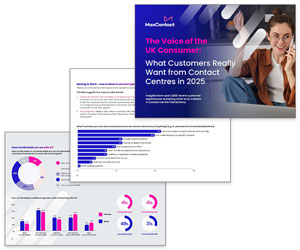Deirdre and Carl, product designers for Spearline, recently sat down with some of their colleagues to share some interesting things about the value of listening to customers.
Could you give a brief synopsis of your background and how you got to where you are now?
Deirdre: My background is in web and project design. I originally studied industry design, which is the design of products, and this was at a time when we just had Nokia, Thread Two Tens, and played snake.
Digital and user interface wasn’t really a big thing at the time. However, the same principles of having empathy for the user, observing how someone uses a product, and discovering their pain points and frustrations still applies, so it’s similar to X-user experience, and UX is a relatively new field I would say, and it’s still very important to businesses to listen to their customers.
At that stage then, I decided to go back to college and upskill in technology, and have a better understanding of digital- and user-interface interactions and principles.
Carl: My background is a bit more varied. I did start off doing website design, but I’ve also been a chef, a painter, and a few other bits and pieces, so I kind of moved into the technology industry when I was living and working in New Zealand.
I’ve always wanted to know and understand how things work. I’ve always got my fingers stuck into many pies, and basically kind of work my way through that way.
A lot of it came down to user-experience design as well, so a lot of the roles I went in there as a certain role in that particular company. I ended up moving across into the UX-design department.
You would consider yourself to be very user and customer focused, so you like to think of the mind of the customer, like putting yourself in their shoes. Why is it important to understand what our customers are doing?
Carl: It’s really important to understand what the customers are actually doing so that we can basically design a better experience for them. Here at Spearline, everything that we are doing, we’re doing for the customer.
The products that we’re developing and everything else is specifically for the customer itself, so we need to understand what the customer is doing, how they’re using it, and the experience they’re having when designing the product for them.
When you’re researching and brainstorming about customers, what techniques and skills do you use or what studies would you carry out?
Carl: Basically, there’s a wide-ranging set, for example we can deal with analytics, like software such as Google Analytics, Google Tag Manager.
Those are analytical software that can be put onto, for example, our platform so we can monitor how customers themselves are actually using the platform, how they’re going through, where they’re actually going through.
We would also use interviews and surveys to understand what it is the customer’s actually doing and why they’re doing things a certain way.
We also look at observational studies so that we can actually physically see them moving the mouse around the screen, where the eye’s tracking, where they’re actually scrolling to.
All of that piece of information builds a bigger picture of understanding how the customers are actually using a product or a particular device.
How do we use this information?

Deirdre Hurley
Deirdre: By gathering the information that Carl described, we can see trends on where there are issues within the product, and this information, it informs us where we can solve these issues, and by investigating into the user journeys and creating work frames based on our research.
This will help us with the product, and make the product a better user experience, and show our users that we’re listening to them. This also allows the user to trust the business and the product.
Could you talk a little bit about making the Spearline platform as user friendly as possible, please?
Carl: This is always going to be an ongoing piece of work. Everything we’re doing is always going to be customer focused. Customer needs will always change depending on how they’re using the system; how they’re wanting to use the system.
The system, the platform itself, is actually built specifically for the customer, so everything that they’re doing, we need to make sure that it is an intuitive system that they can use, and go through, and actually get the jobs done that they’re trying to do.
We’re working on it now through the observational studies and everything else that we’ve just been talking about.
It is going to be an ongoing piece of work, and it’s never going to end, as we’re always going to get feedback from the customers, and we’re always gonna try to build the platform, or keep adjusting the platform to make sure that the users can use it the way they should be able to use it.
What would you consider to be a big CX challenge? Have there been any big CX challenges that you faced and overcome in the past as a designer?

Carl Naysmith
Carl: What I find a big challenge is having a voice for the customer. You can listen to your customer’s concerns and complaints through contact centres or email support, but actually fixing the root cause is the challenge for customers.
However, the challenge we face is speaking with customers, and trying to get them to open up more about the problems and issues that they face. To overcome this, we’re going to use user testing.
This is a great way to observe the users while setting out tasks for them on a prototype, and this compares what they do to what they say, so it’s to validate the problems that they’re facing.
And to wrap it up, any big developments, or anything exciting to look forward to on the calendar?
Carl: We’re a fairly new team to Spearline, so just about everything at the moment is big.
What we’re currently doing is making sure that we’re listening to the customer’s voice, trying to understand how we can improve what they’re actually doing day to day, and it’s as simple as that, head down and do the work.
Author: Spearline
Published On: 14th Oct 2019 - Last modified: 26th Feb 2025
Read more about - Expert Insights, Spearline, Voice of the Customer






































